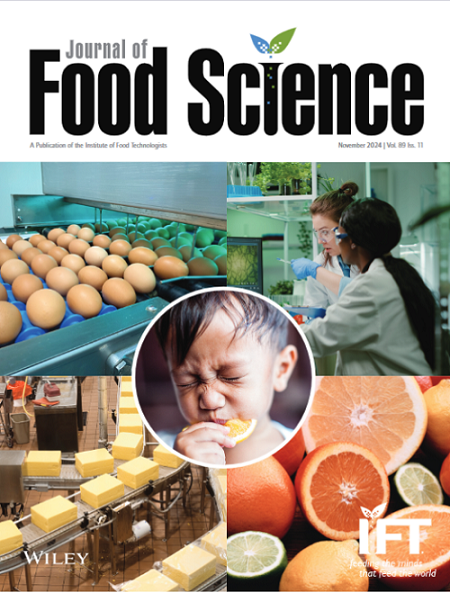Reheating Oils During Deep Frying Alters Fatty Acid Profiles, Lipid Peroxidation Level, and Nutritional Indices of French Fries
Abstract
Repeated frying with recycled oil promotes lipid peroxidation and fatty acid (FA) profile changes that predispose consumers to increased health risks. The magnitude of such changes differs by oil type, temperature, and extent of recycling. This study aimed to determine changes in FA profiles and nutritional indices of French fries prepared at 150°C and 190°C using palm olein, canola, olive, and sunflower oils recycled up to 10 times, as well as the levels of lipid peroxidation in the oils. FA methyl esters were analyzed by gas chromatography. Nutritional indices were calculated from the FA profiles. Oxidative changes were monitored by peroxide, p-anisidine, and iodine values (IVs). Results showed progressive increases in lipid peroxidation and saturated and trans-fatty acids (TFAs) and decreases in unsaturated FAs, which were worse at 190°C. p-anisidine values (p-AVs) increased significantly at every frying cycle in all the oils, making it a better oxidation indicator than peroxide and IVs. Sunflower and canola oils had the highest, whereas olive oil had the least absolute decreases in unsaturated FAs. Palm olein had the highest increase in TFAs, which is postulated to be indirectly due to its higher content of saturated fatty acids (SFAs). This oil also had higher indices of atherogenicity (IA) and thrombogenicity (IT), and lower hypocholesterolemic:hypercholesterolemic (HH) ratio, which worsened with repeated frying. Thus, during repeated frying at 150°C or 190°C, palm olein, with a less favorable nutritional profile than olive, sunflower, and canola oils, also undergoes higher formation of TFAs.





 求助内容:
求助内容: 应助结果提醒方式:
应助结果提醒方式:


